The Article
George Blood – Saving Music, Video, Data…
28th October 2018
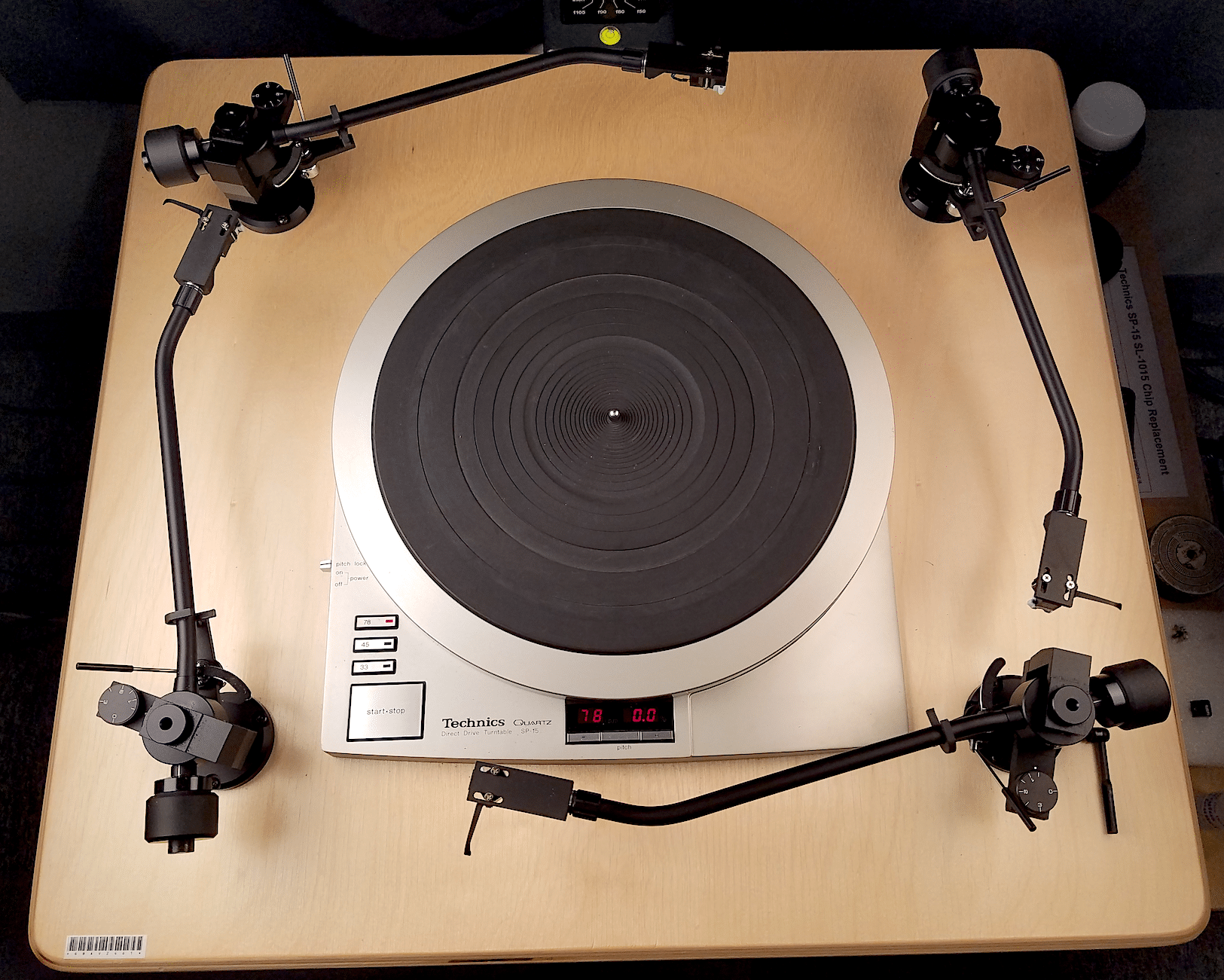
…and much more including recorded and live performances, spoken word and video on every conceivable format including the obscure and the obsolete. Paul Rigby talks to George Blood, archive restorer extraordinaire
“You keep things alive by keeping them on the move.”
This is the George Blood mantra. The answer to those who have ever wondered about the perfect, long term, permanent, once and for all, archive system, the best strategy to store data (of whatever type) over the extended term and to prevent the loss of priceless information for the foreseeable and not so foreseeable future.
Basically, what Blood is saying is that there isn’t one. There is no perfect system. It doesn’t exist. It will never exist.
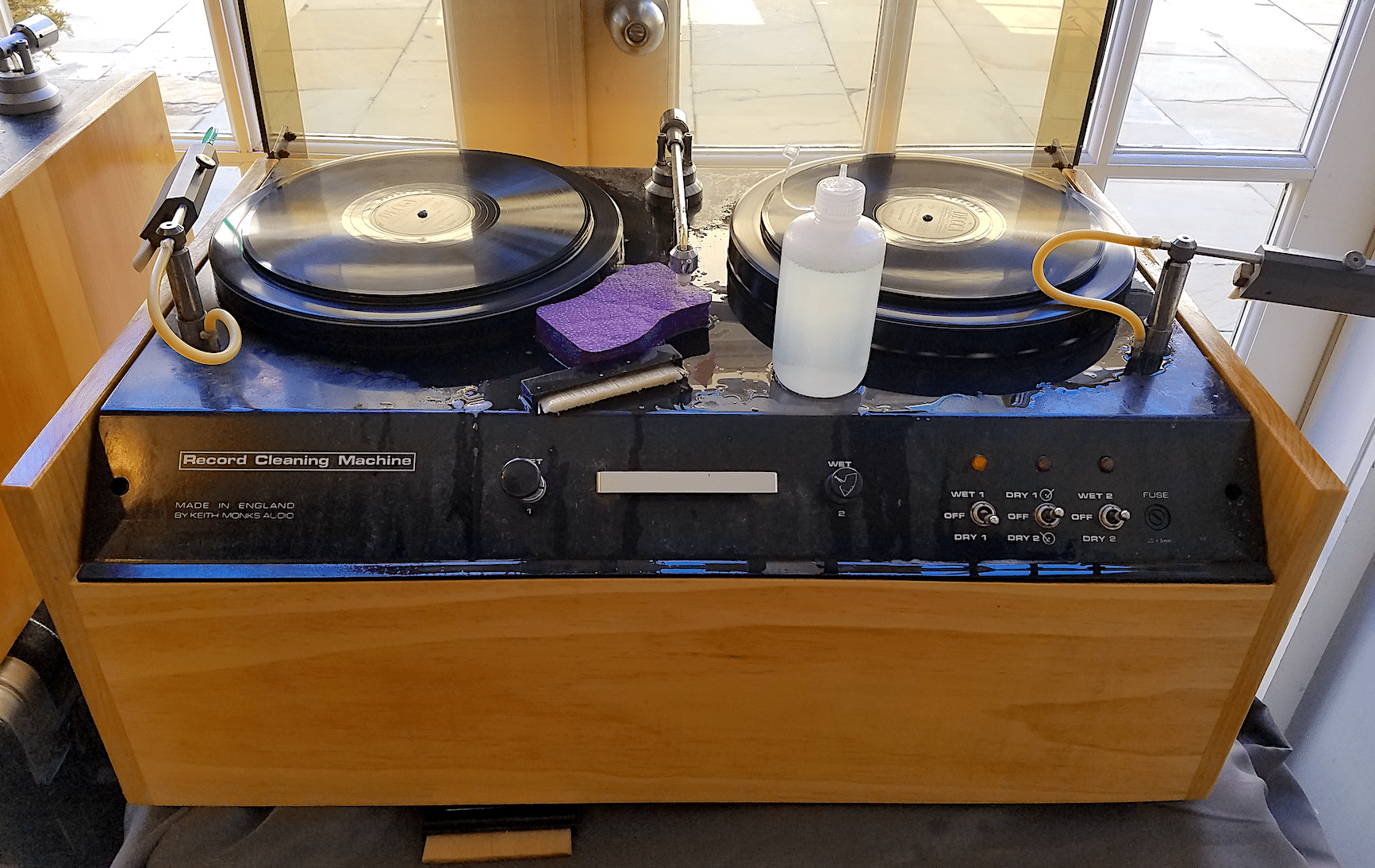
And what’s that got to do with music and, if you’re interested, music-based video? Everything, as it happens because Blood handles and rescues the lot from certain death and extinction. Recordings which are either previously thought inaccessible or slowly fading and rotting away. For audio fans and audiophiles, George Blood is a bona fide hero, “We handle music collections from recitals to record labels, spoken word from oral histories to lectures to board meetings. We have a collection running today regarding environmental lawsuits. We’re doing a large collection from a major public broadcaster: both raw interview footage and finished programmes, we’re doing 400,000 78rpm sides for the Internet Archive, a lot of work for the New York Public Library’s Library of the Performing Arts. Everything from live concerts for every conceivable genre of music to video taped dance programmes.”
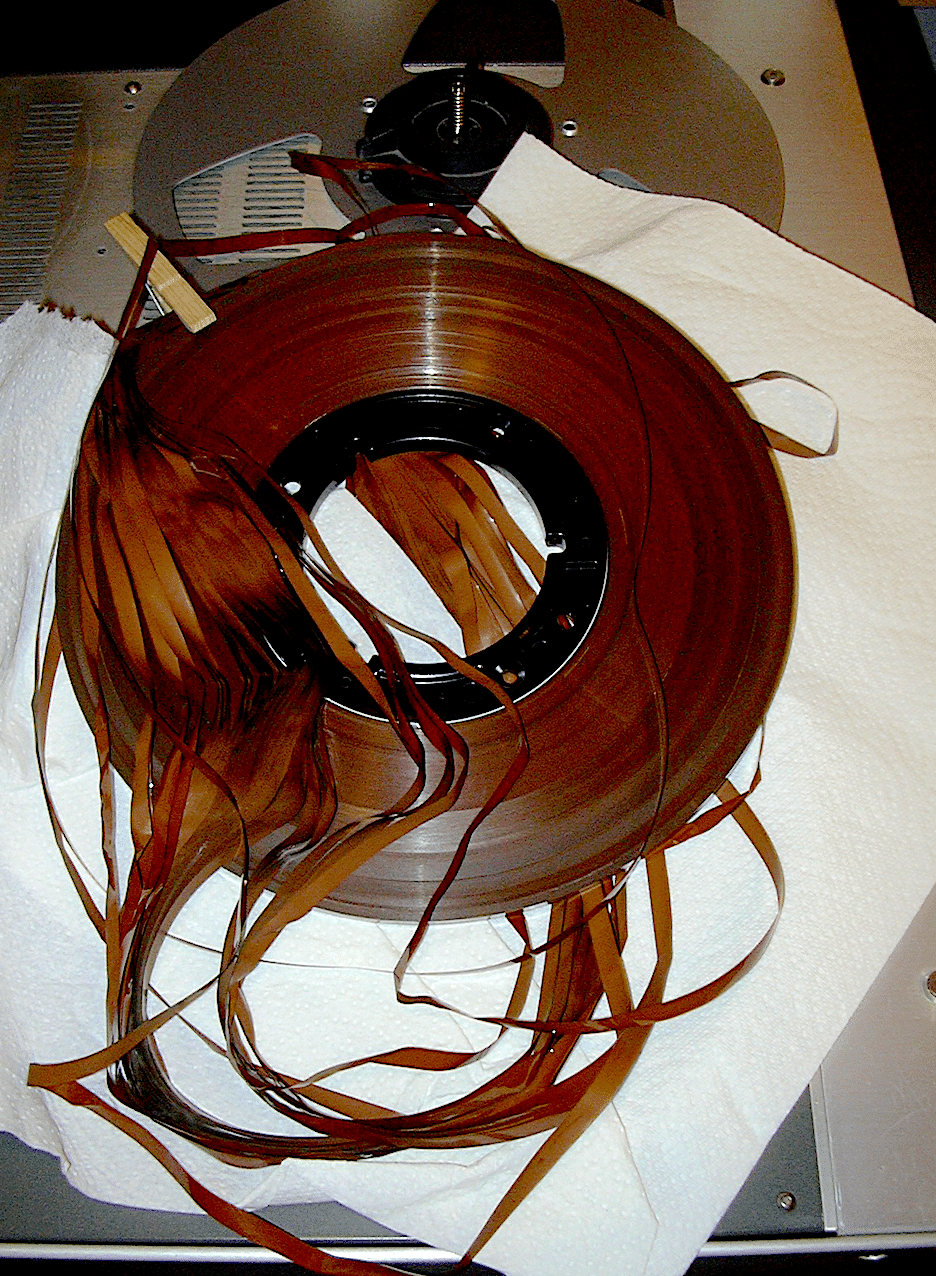
And that lot was only what Blood could recite off the top of his head.
His company, officially know as George Blood, Audio/Video/Film & Data digitises those mediums as well as migrating that data to usable formats. In business since 1982, Blood was originally employed by a national syndicator of fine arts programming on the radio known as WFMT-FM in Chicago, “They syndicated 40 classical music programmes including the Philadelphia Orchestra which I was hired first,” said Blood. “They were the first to bring the BBC over to America, back in the day. Including syndicating the BBC’s World Service. Before the BBC came over themselves.”
He also spent his time gaining precious experience for his future endeavours during this period, “I was actively encouraged to do outside work to learn about other orchestras, other spaces, other microphone techniques and so on. By 1990, I had accumulated a large number of recordings and I was trying to figure out how to organise them. My broadcast collection of recordings and the recital archives of the Curtis Institute of Music in Philadelphia got together and I built climate controlled storage for those collections for patron access. I was then asked to start accessing those collections to digitise old formats. Now I have a staff of thirty-five and we handle 11,000 items a month for clients such as government agencies and cultural heritage organisations,” said Blood.
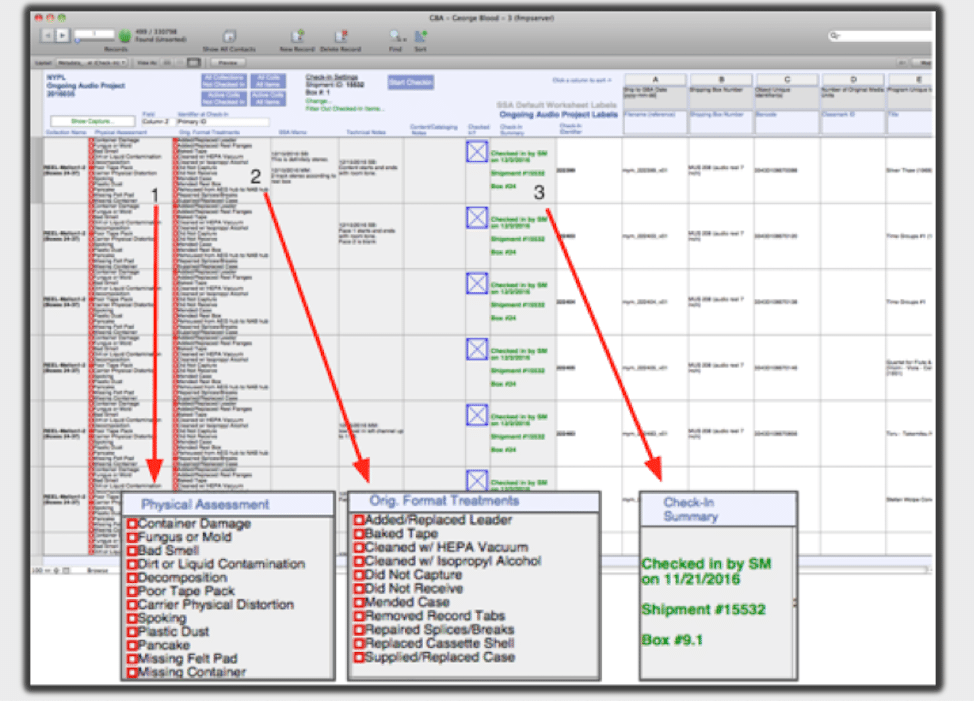
He and his team moved into their current facility five years ago when there were five people on the staff, “We originally handled music, then added film and video. Two years ago we added data. Almost all of that was a response to demand and requests. Now, for example, we handle 147 different audio-visual formats.”
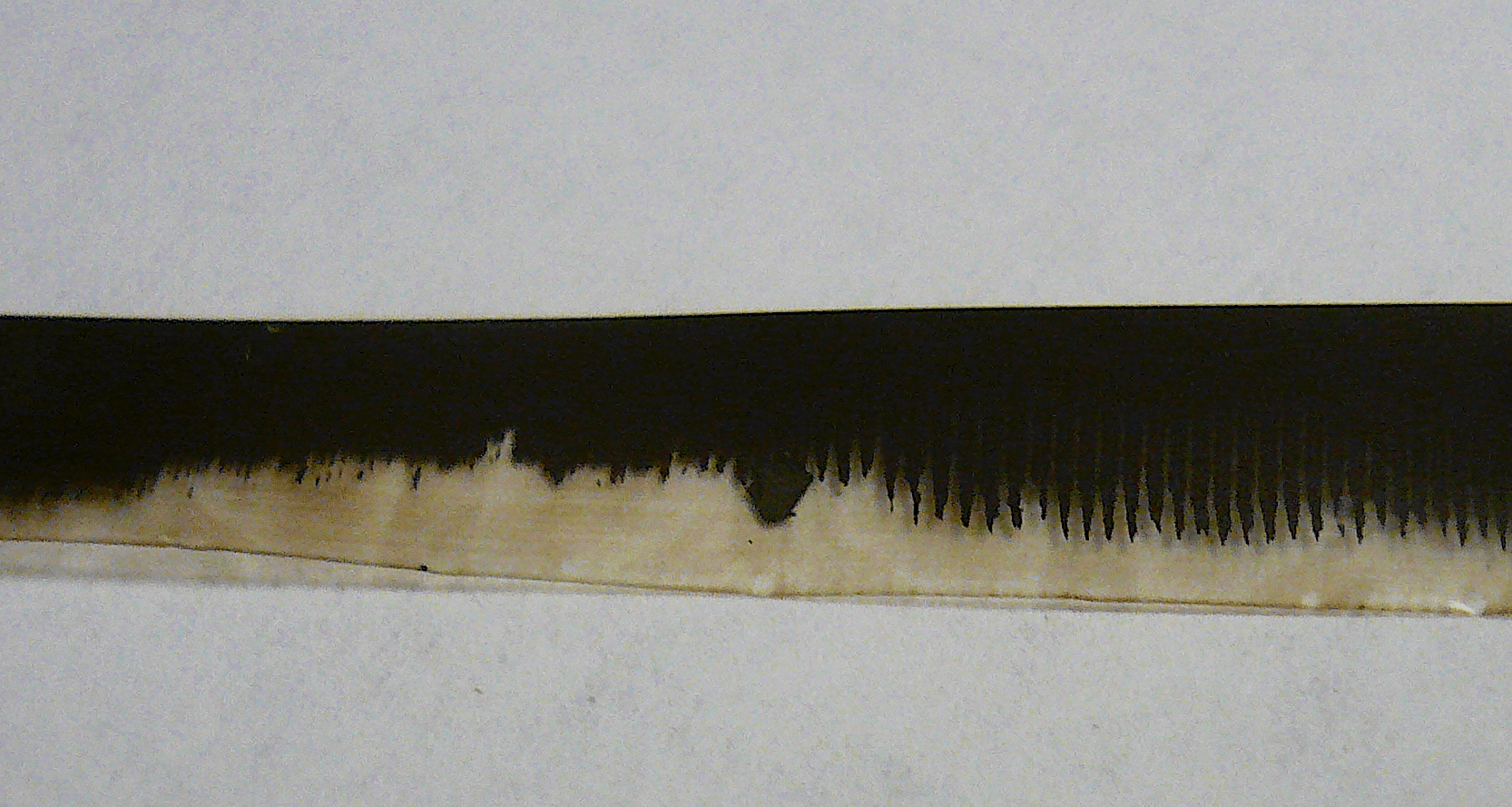
The bulk of Blood’s work is to create digital surrogates that are authentic copies of the original, “We are preserving the original artefact in a digital form ‘as is’. That is 95% of what we do,” said Blood.
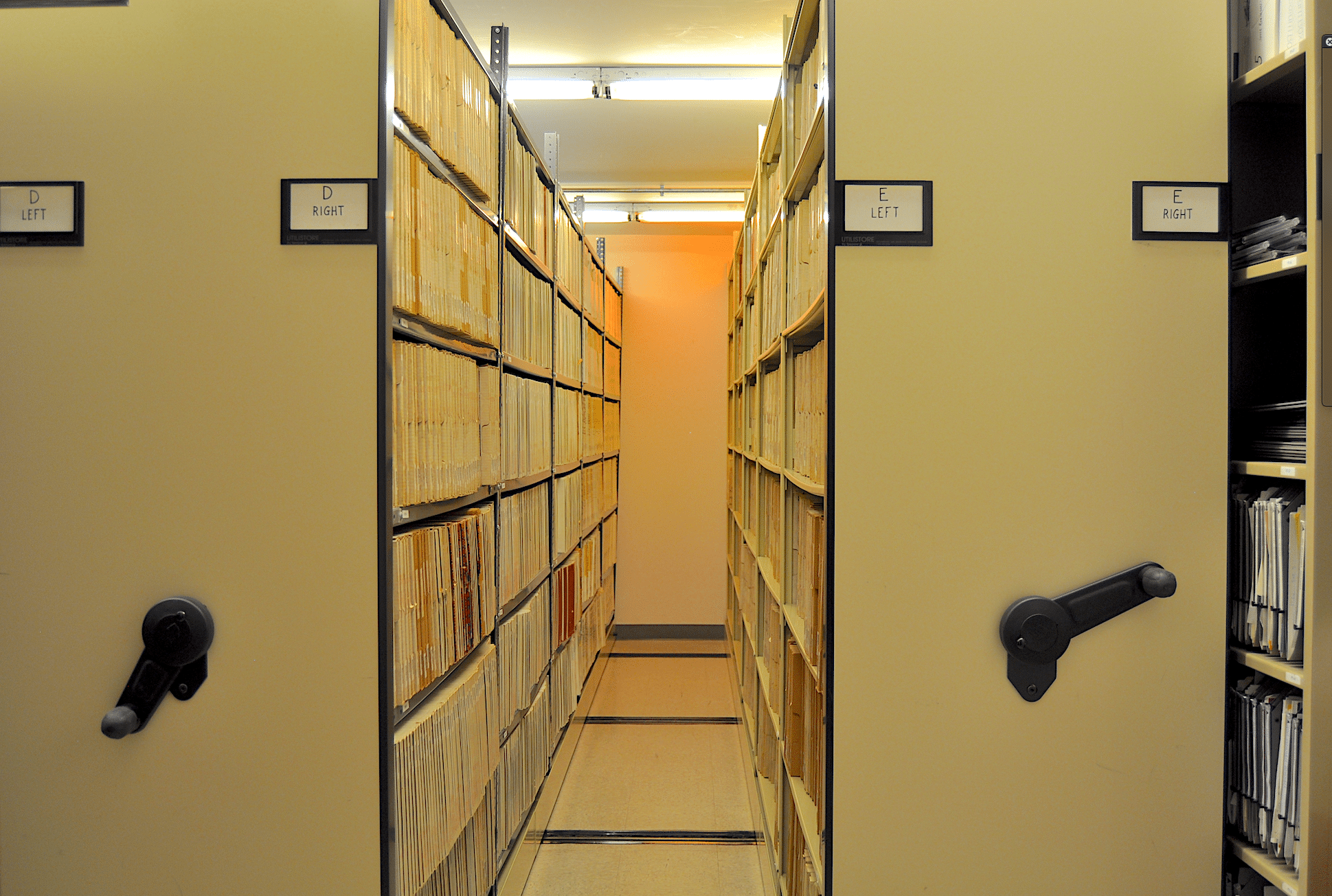
About 80% of the audio George Blood handles arrives on audio cassettes, quarter inch reels in all speeds and track formats and 78 rpm discs. In video, 80% arrives as VHS and three quarter inch U-matic, “U-matic was a low end video format, back in the days when you may have seen two inch Quad or one inch Type C or B quad where you’d have a $20,000 machine instead of a $80,000 machine. It fit into a cartridge so you could run off a dub and hand it to a producer in the days before home video came along. They were used to make editing decisions, then you’d go from there to the more expensive system for the final recording.”
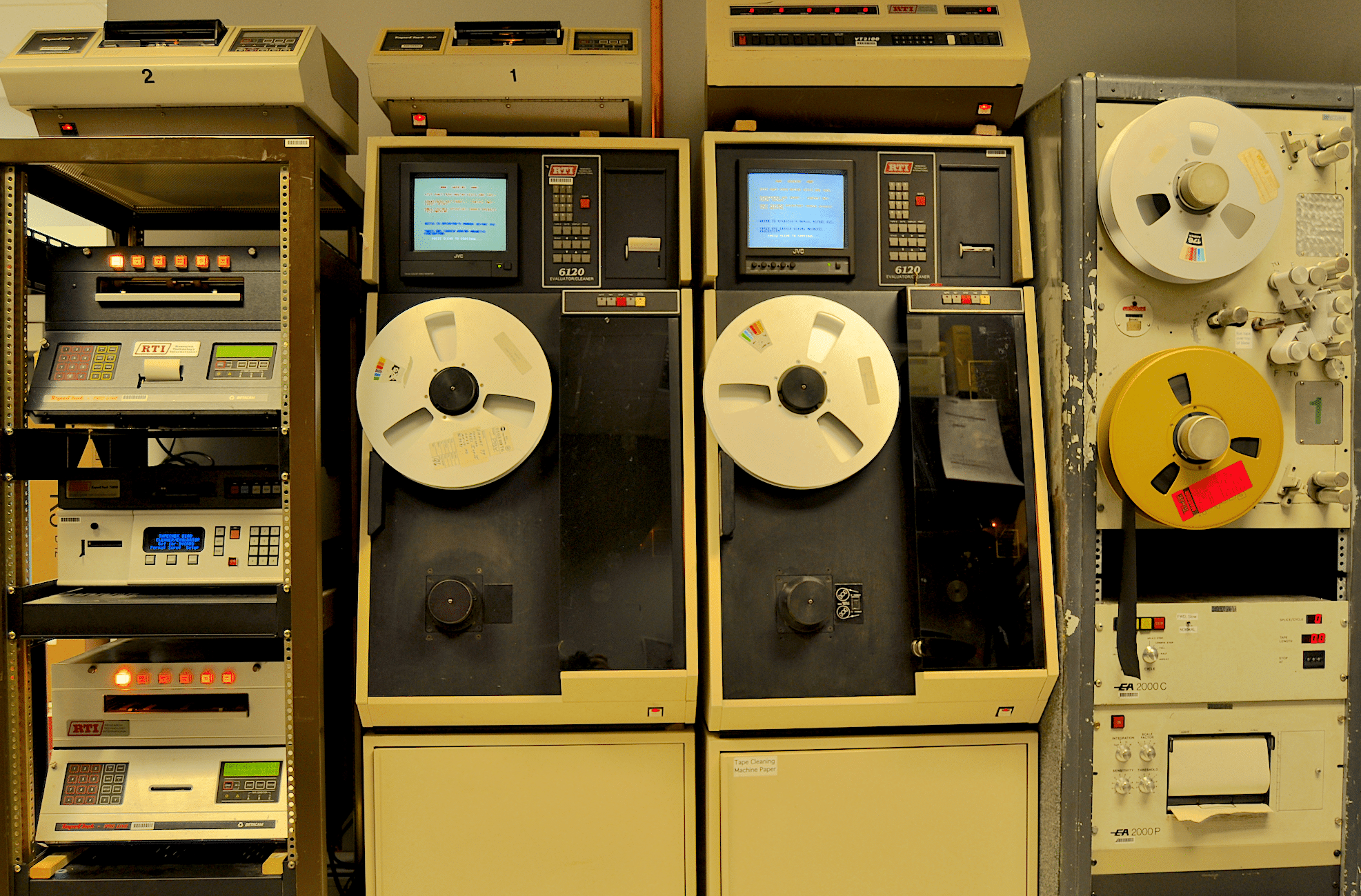
Getting at the data is often the ‘tough ask’ in any project. Often, this means tackling obsolete formats. For example, “We can handle unusual noise reduction systems like Telcom and the DBX 700 (an early competitor to the Sony Professional Digital Recorders the 1610s and the 80s). We handle one inch and two inch, 8, 16 and 24 track, multi-tracks, 48 track digital reel-to-reel machines. Unusual things like a brown floppy disc, spanning eight inches with an unmodulated groove on it with a magnetic head underneath the tonearm. A flat analogue disc that works like tape. It’s called a VoiceMaster. We also have the largest fleet of working two inch quadraplex machines. A lot of formats that were just spectacular failures including the one inch video format by IVC and Sony V11. It’s a huge menagerie of formats. We have many machines where we haven’t even used them to play back 100 tapes – they’re just that rare.”
Blood even carries wire recorders, stemming from 1898. The Webster Chicago recorders were used in the 1950s and 60s as an inexpensive recorder and a competitor to cutting lacquer discs. It’s stainless wire that runs 24in per second and has the bandwidth of a “really good phone call” and reasonable dynamic range, “The recorder is running at a constant angular velocity so that the wire moves faster on the outside but because there might only be three eighths of an inch of wire, you don’t really hear that but the alignment procedure in the technical manual, to set the back tension, tells you to turn up the tension until the recording slows down a bit. So, they’re a little iffy when it comes down to things like wow and flutter, as you can imagine.”
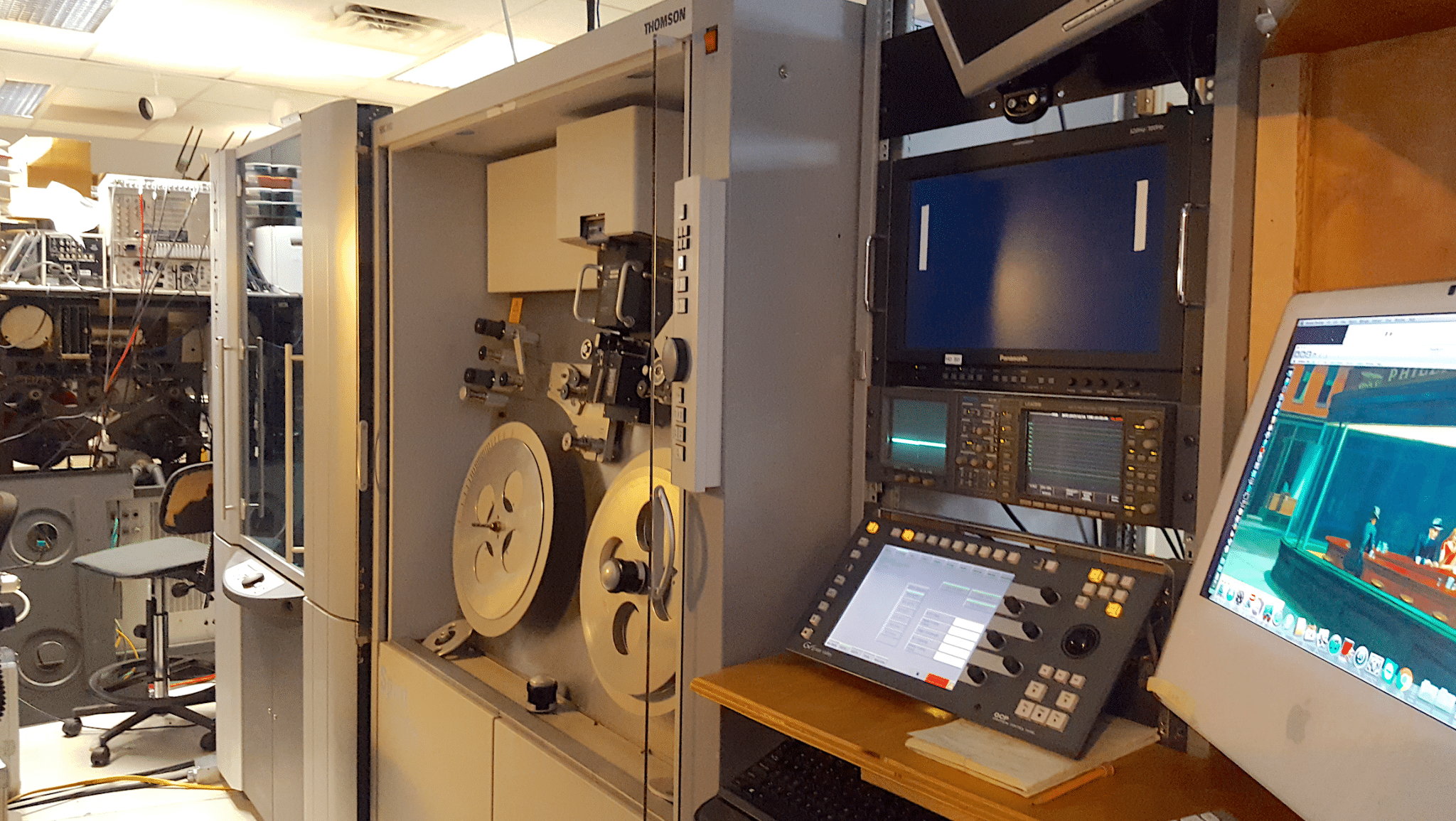
Original ‘software’ arrives as three inch reels, as a spool, “They’re pretty heavy because its a lump of stainless steel. We’ve found unique recordings from home hobbyists featuring the Chicago Symphony and New York Philharmonic off the radio. These are often the only known recordings of that particular concert, for example.”
All in all? George Blood saves precious recordings from being lost forever and he’s doing it at a rate of 40TB every single day. Of course, he’s paid for what he’s doing but from the perspective of the dedicated audiophile, the man should also be given a medal.
BLOOD ON…HEALTH
“When the media arrives, our registrar does a media level inventory registration with a physical assessment. Part of that is a look out for contaminants. If mould is found, that items is bagged and set aside so that it doesn’t contaminate other items.
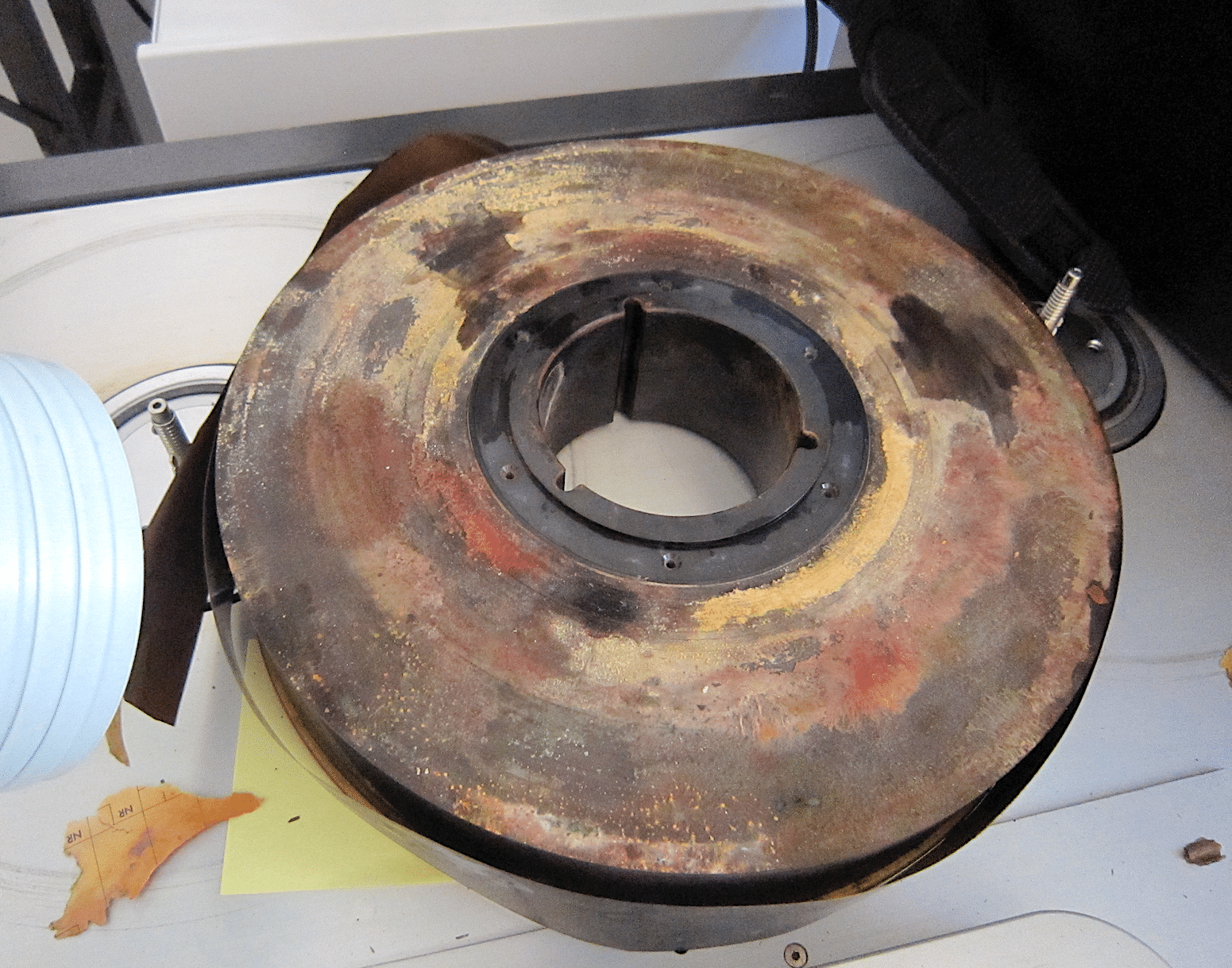
That is then cleaned by an extraction fan where the air around the unit is pulled away, through a three-stage filter. There’s also lots of aprons, masks and gloves and so on.”
BLOOD ON…DIGITAL STORAGE
“We go for 24bit/96kHz as WAVs,” said George Blood. “Most of the sources I receive don’t warrant anything higher. This will provide a higher resolution than nearly all of your input sources. Also WAV files, until recently, suffered from a Windows 1 creation legacy of being capped to 2GB – an hour in stereo. Not all software will read the modified variety that caters for larger file sizes. It’s an interoperability issue.
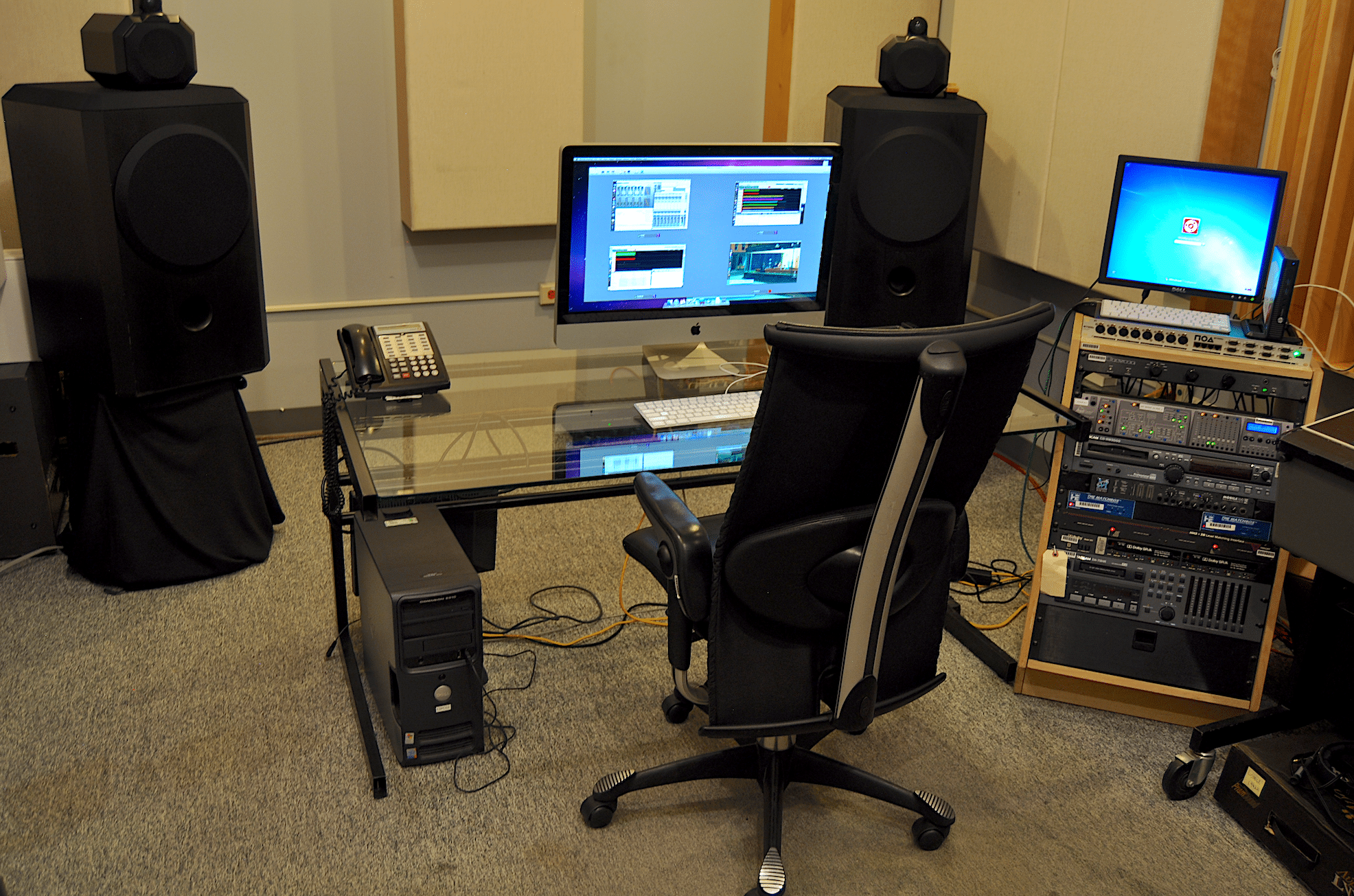
“When I got into this business, Windows media would not play a 24bit file. There are important compromises going from 96kHz to 192kHZ. That is, you’re stretching the physics of the convertor to the point where the linearity and noise in the inaudible band affects the performance of the pass band that you want too hear. Often, it sounds better not because you’ve gone 192 but because you’ve got a better A-D convertor design.
“We create checksums for those too. We’re performing in a high performance IT environment with a 320TB storage of RAID 6 over glass fibre connections. So we can lose two drives before we have to replace it and rebuild. We also back up data every day to data tape. That said, we move 40TB of data per day. All of our data is moved to over central storage area over glass fibre. After why pass quality control we write them out to client specifications. Usually a Western Digital HD, interface of choice or LTO data tape. As soon as the project is done and checked, we delete the files. We don’t have that much storage. I spent $54,000 on external hard disk drives last year.”
BLOOD ON…REELS & CASSETTES
“I use a Studer A80 for playback. There’s very few stationary parts in the tape path. We’ve taken the record and erase heads off the machines and replaced them with Teflon posts. We have a very smooth tape path. This helps of any tape is deteriorating. So there’s not a lot for it to hang up on.
“For cassette, for a long time we used Nakamichi Dragons and like the way they sounded. They didn’t take the day in, day out abuse very well and the auto azimuth corrector often made things worse. A lot of the material we’re handling were not made with the music lover in mind, often done in £20 desktop recorders, for example, on someone’s kitchen table. This low grade material features an unstable azimuth. The Dragon chases the azimuth which means that its’ wrong most of the time. Sometimes it would run off its range. You’d hear the gears clicking and it wouldn’t come back.
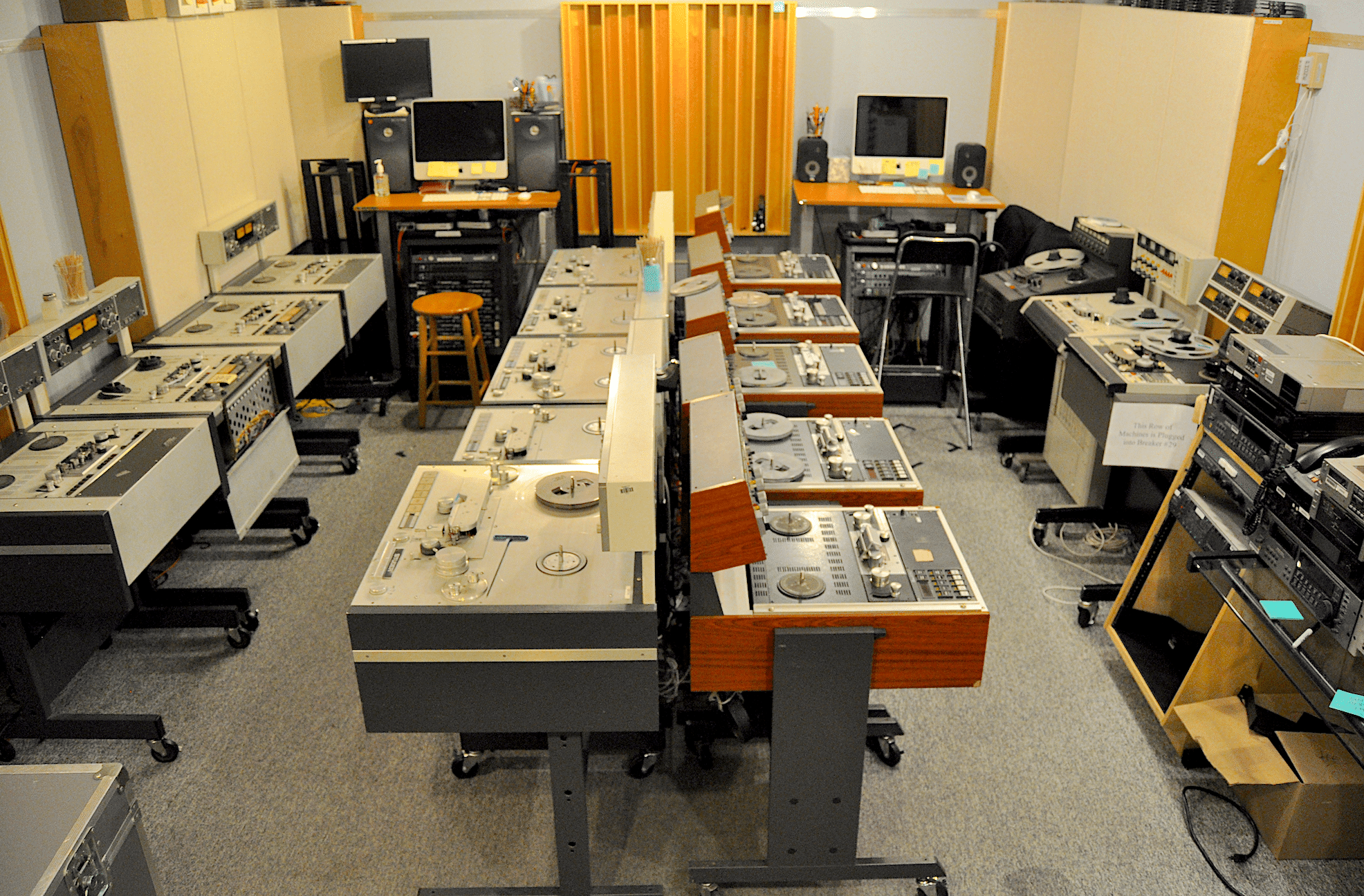
“We have a ‘FrankenRack’, that’s what we call it. We have a batch of miscellaneous cassette decks, used for special cases. Those cases can be that it won’t play in any other machine. We once had a collection of tapes encoded in Dolby A. High frequency stability performance in cassettes, generally, was so poor that Dolby A tended to mistrack so we used the Dragons for that because we could dial in the azimuth.
“Otherwise we use Tascam 120 Mk.III, modified to have easy access to the azimuth screw and we changed the azimuth screw to stainless steel so it would stand up to hard use and we use a torx head on it so that the wrong screw is not adjusted by mistake.”
THE GREAT 78 PROJECT
The Internet Archive seeks to preserve universal knowledge to everybody. They’ve been digitising books for a long time. Music is included too of course. The current goal is to provide a reference section for 78s, supported by 20 different institutes. It’s highly inclusive. Hence, there is access to many discs with no particular audience. Things that are not exactly commercially exploitable. Examples are comedy discs from the turn of the 20th century, sound effects discs, music from unusual places such as Hawaiian music from the 19-teens. You’ll also find alternative releases where an artist might re-record the same song for different labels or a concurrent release appears but it’s not the same take.
George Blood estimates that 3-3.5million unique recordings were released during the 78rpm era. The Internet Archive has committed to digitising 400,000 sides, “We are avoiding classical music because so much of that migrated to LP and CD era. It was a way to remove a large quantity of discs so that the resources would be largely devoted to more undiscovered materials. One of the important parts of the process is that we only digitise a recording once. We focus on more titles. If there’s a poor title and that’s all we have, the engineer clicks a check box which says, ‘Boy, it’d sure be great to get a better copy of this.’ Then we’ll do another one.”
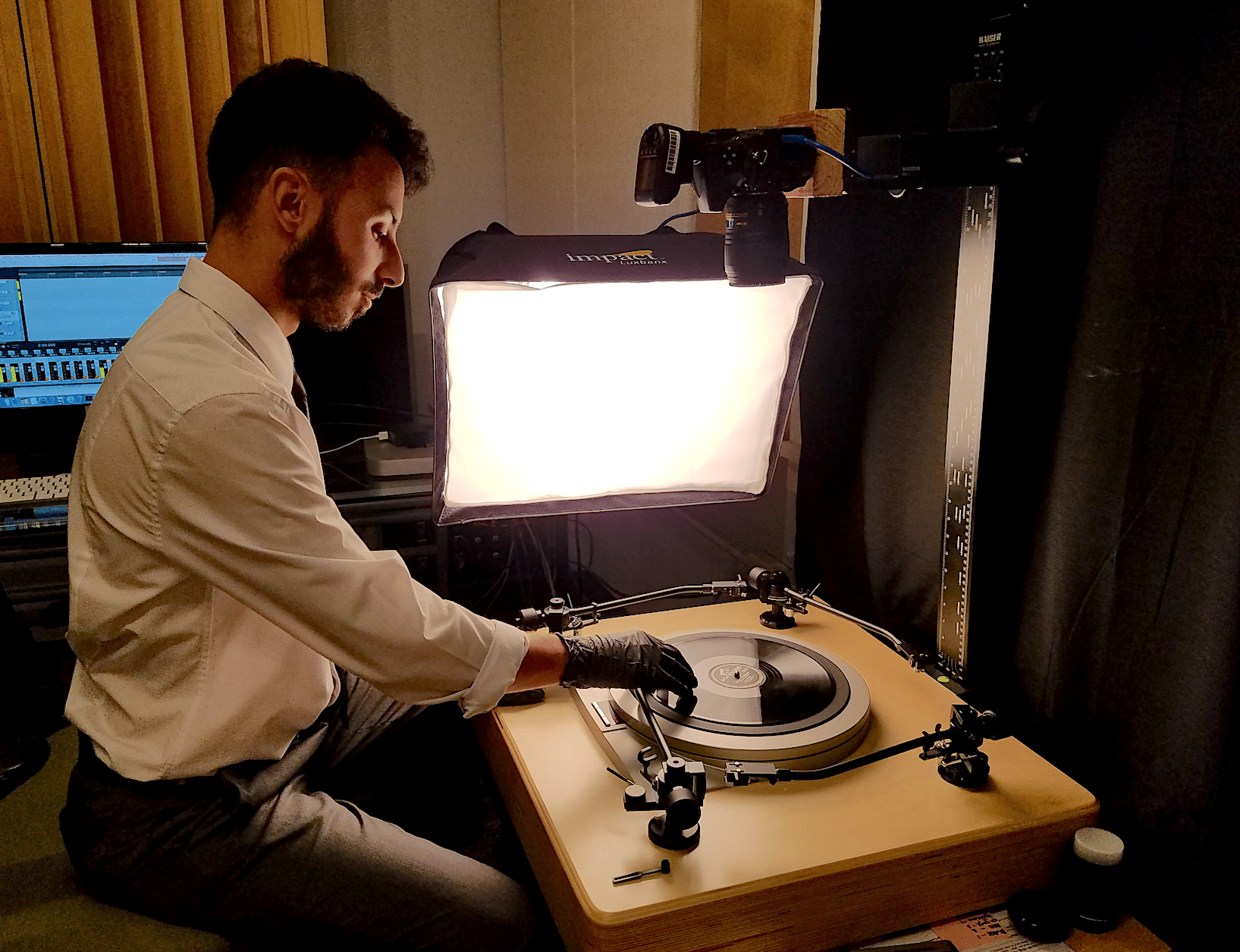
The turntable used in the digitisation process is a Technics SP-15 with four 12” Jelco arms attached, “Ours have been refurbished by Timestep in the UK. Specifically the main bearing, speed controller and logic in the devices. These turntables get a lot of abuse, running sixteen hours a day.” Timestep’s Dave Cawley works closely with George Blood and also supplies the tonearms and the T-01EQ universal phono equalisers.

Different stylus sizes are applied, re-tipped by Expert Stylus in the UK to M44 Shure cartridges. The stylus tip size varies from 1.5, 1.9. 2.1 and 2.3mil, “We have thirty different tip sizes available,” said Blood, “because 78rpm discs were not standardised for speed, equalisation or stylus size.”
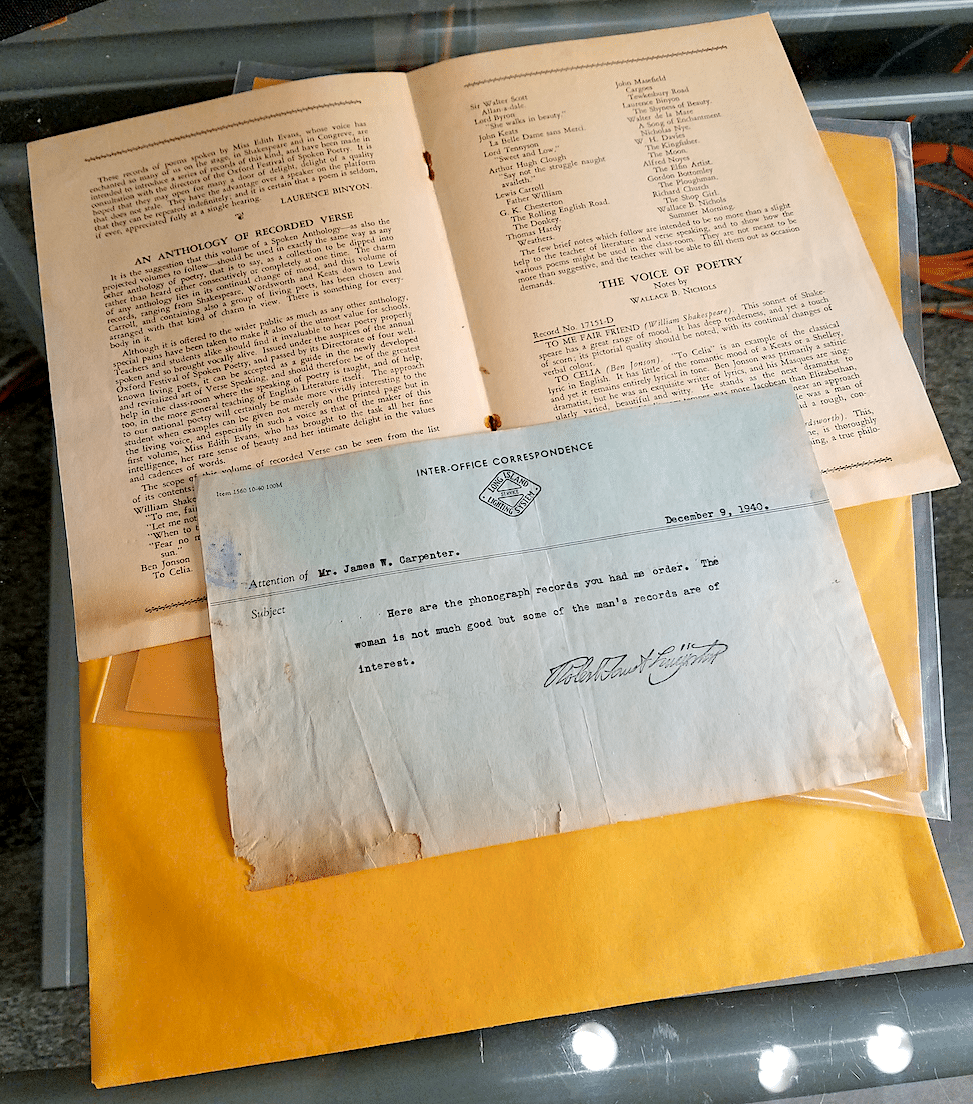
In the first tonearm, the engineer will refer to the reference information which will say that this disc purports to be this style tip size and then the other three tonearms are sizes that are around that reference point, “What we’re working on is the assumption that the disc will have been ‘loved’ over the years, played many times and maybe worn in a certain way, so we can play a different area of the groove. The 78, like LPs, suffer from inner groove wall distortion so that you may find a better sound with a different styles size on the inside of the disc than the outside of the disc.
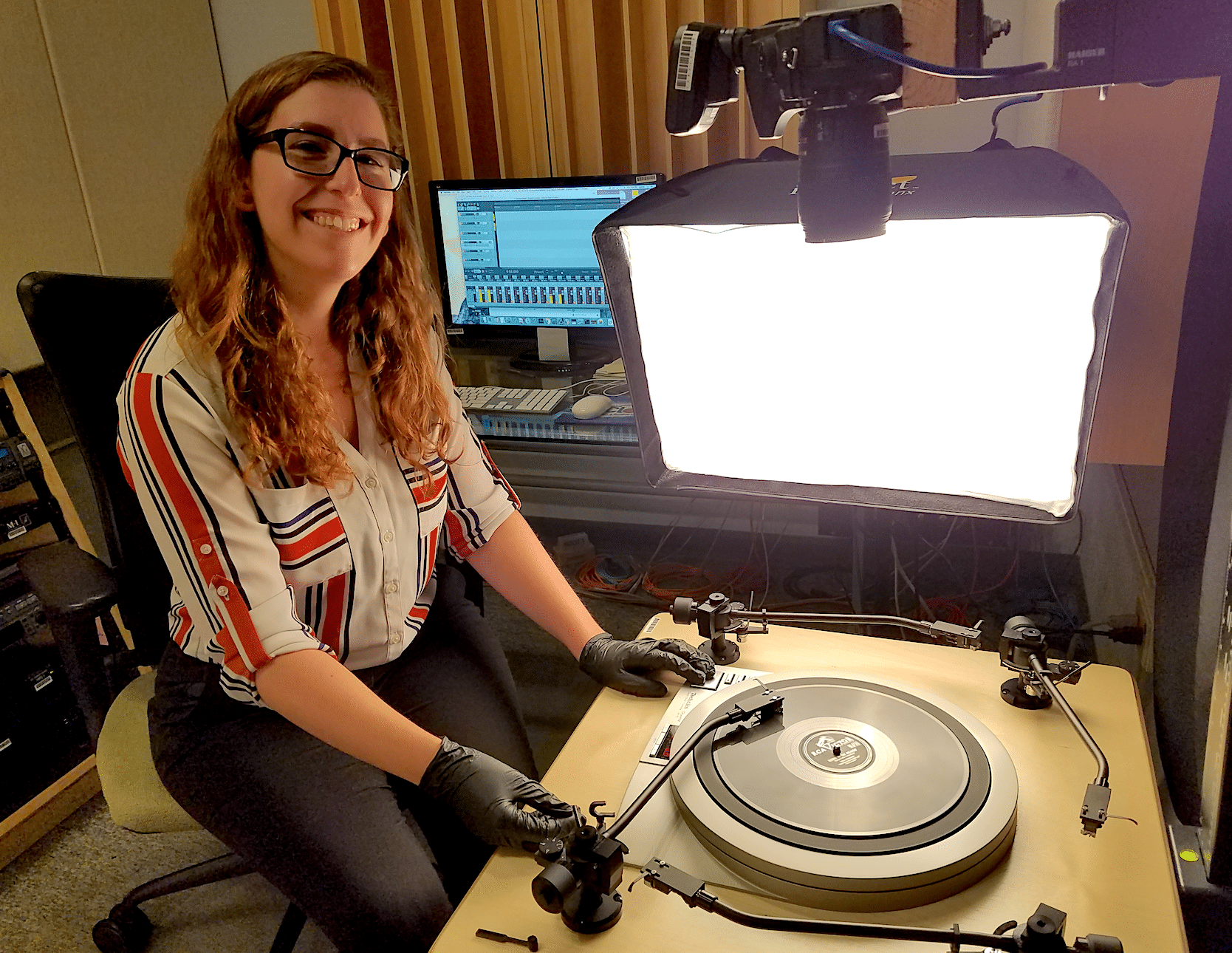
“There’s debate in the community about choosing the best stylus size. Traditionally, you’d have one tonearm, try one size, listen, try another size and back and forth. This takes time, it’s hard on the memory and its hard on the hardware. I built this turntable to speed the stylus selection options. You put four arms on it, four tips, take an 8-channel A-D and you can compare them side by side in real time play. It’s astounding how easy it is to hear and what you can hear. You can easily go back and forth in this way. After you have the resultant file, you can change the equalisation, speed but not the physical interaction of the tip in the groove. We decided to keep all of them. All of the discs are mono so we have four sizes, right and left groove wall and then with and without EQ (the recommended EQ from that era which you can see on the website). That’s 16 channels to choose from for the listener.”
For more information click great78.archive.org/preservation and archive.org/details/78rpm
[Don’t forget to check out my Facebook Group, The Audiophile Man: Hi-Fi & Music here: www.facebook.com/groups/theaudiophileman for exclusive postings, exclusive editorial and more!]

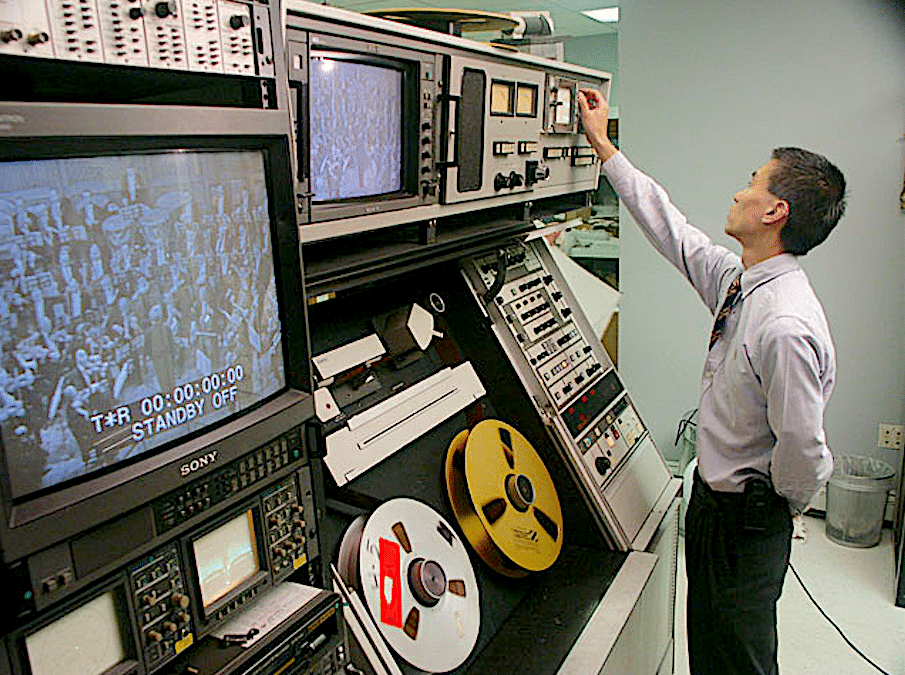
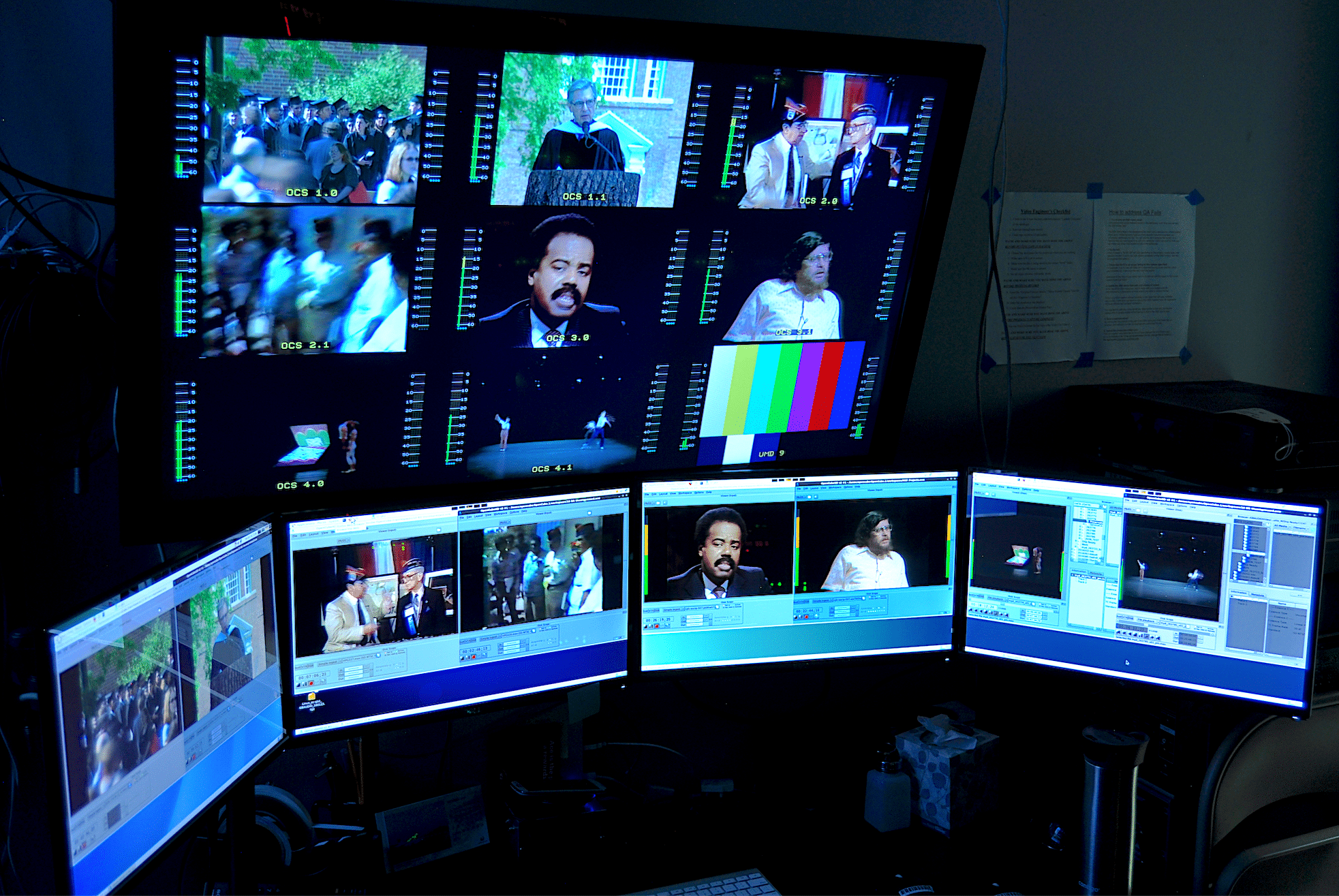
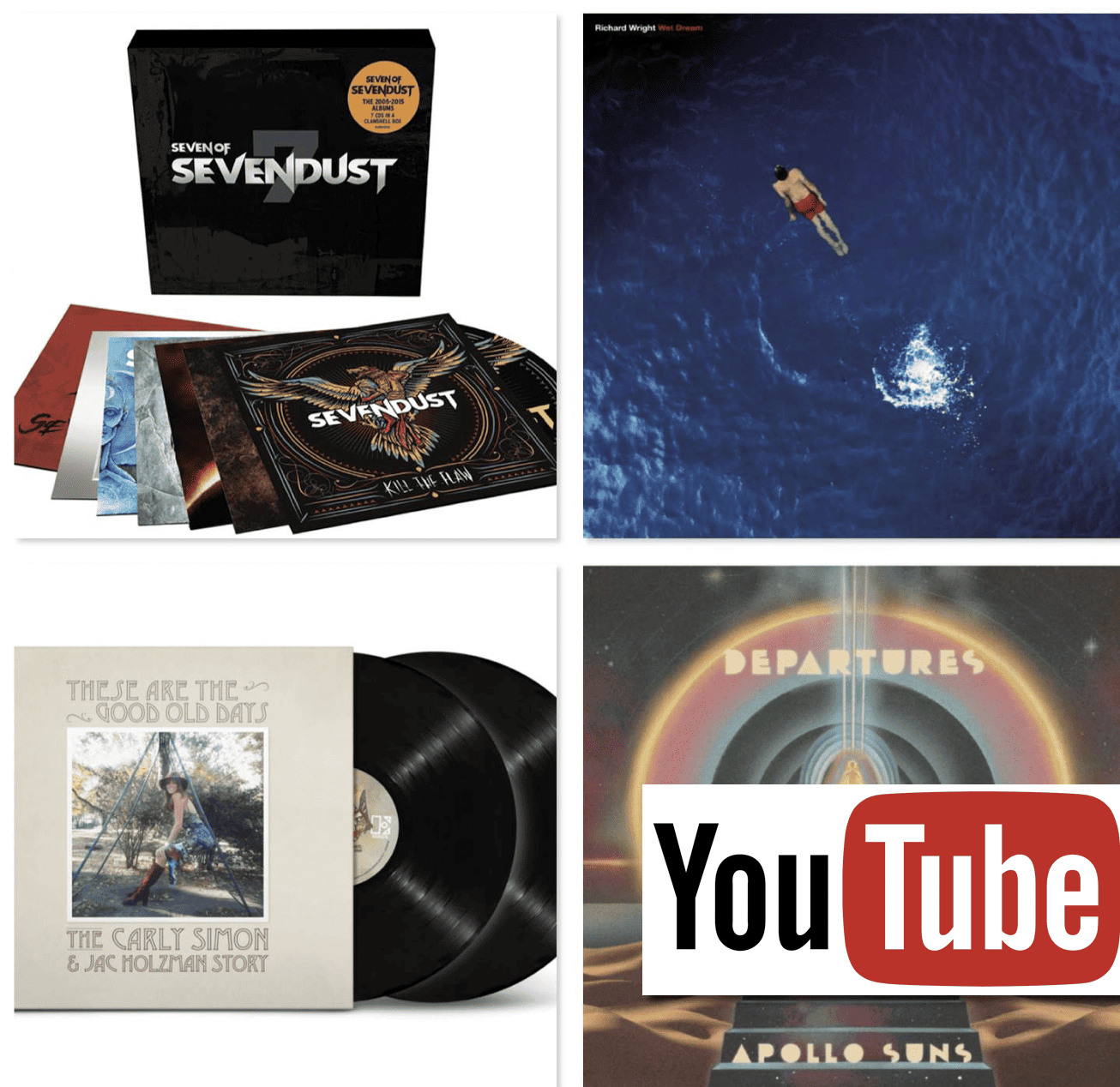
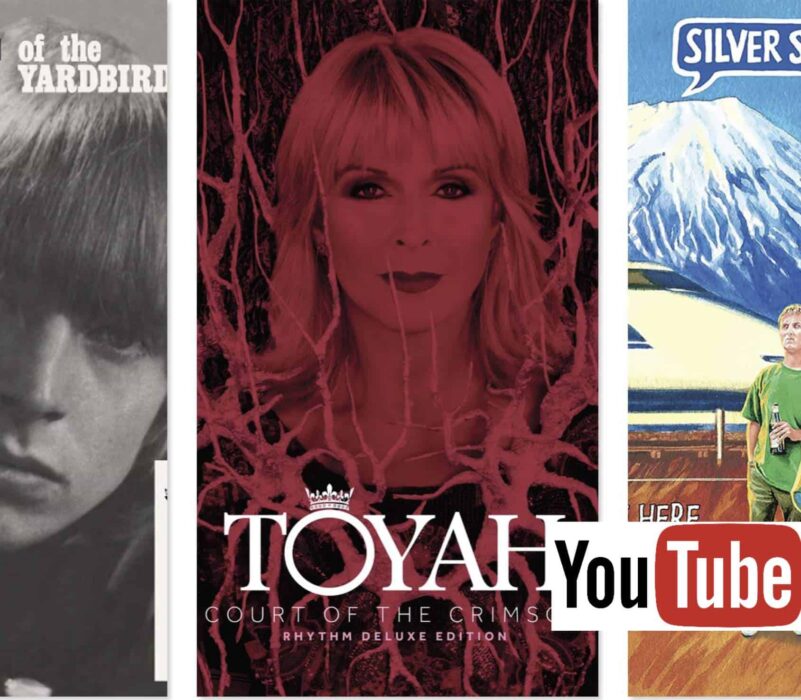
A very enjoyable read, Paul.
You’re right, this man/company deserves a medal!
It’s great to see the interest and care in archiving all things from the past.
Many thanks Ian 🙂
Hey Paul – love your newsletter, but REALLY loved this article. I’m the family archivist, have an “analogue suite” (an AR turntable, several old videotape machines and a copy of Final Cut Pro 6) down in my basement, and love reading about preservations efforts. Bravo to George Blood!
Thanks for your kind words, Mike. And, yes, bravo to George!
While I commend your enthusiasm on the subject Paul, and there’s no doubt that there is something admirable on preserving this work. This man is…
If have genuine workplace concerns and they can be substantiated then I urge you to seek redress via official channels. Calling yourself John Doe while offering no account image or evidence to accompany your account only opens myself and this website to claims of slander and legal action. If you have suffered during this time then I do sympathise but this is not the forum to air those grievances. There are more direct, relevant and effective solutions out there that can offer real and constructive assistance.